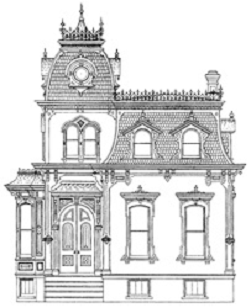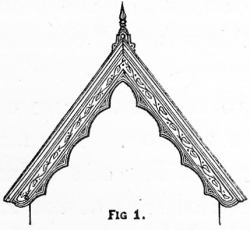San Francisco has many diverse and unique attractions that draw more than 16 million visitors to its shorelines annually. One of these revered destinations is the beautiful and historical Victorian-Edwardian architecture.
In order to learn more about these landmarks, I had the pleasure to join the San Francisco Victorian Tour recently. It was a great experience and opened my eyes in regards to San Francisco’s obvious Victorian history. I've learned about the Victorian era architecture of the city’s first suburb. As we walked through the neighborhood of Lafayette Square, I also learned about Victorian lifestyles and San Francisco’s illustrious history. Some steep streets and many fabulous views!
Mr. Robert Goldstein did an amazing job and gave us all a deeper understanding, not only about the Victorian homes, but also about building styles and the results of the 1906 earthquake, which stopped in Venice Street. These often very whimsical mansions can be found throughout San Francisco. One of the most well-known rows of mansions is known as the “Painted Ladies”, featured on Steiner Street, also known as “Postcard Row”. The beauty of the Victorian residences is that they represent a wide spectrum of architectural styles influenced by cultures from all over the world, ranging from the mid 1800s through the mid 1900s. These include Carpenter Gothic, Italianate as well as the very popular Queen Anne. Although Victorian architecture integrates a plethora of different styles, each style is unique and these structures often integrate several styles.
Gothic Revival houses were built between 1840 and 1880. The steeply pitched roofs, arched window moldings and leaded glass draw their influence from medieval European cathedrals. They also feature asymmetrical floor plans, usually a one story porch and a veranda. These homes were often constructed using readily available redwood. Most of the homes in this fashion are often referred to as Carpenter Gothic, due to the fact that most of these structures used redwood versus stone. San Francisco Landmark, The Westerfeld House, is located at the highest point of Alamo Square and features breathtaking 360 degree views from the top floor. It was designed and built in 1889 for confectioner William Westerfeld.
The Victorian Italianate style was from 1850-1890. This style can also be subcategorized into flat-front and slanted bay designs. One of the most prominent features that sets this style apart is the flat roof. The flat-front is precisely that, featuring a false front, bracketed cornices, portico balustrades, bracketed portico and a transom over the front door. The slanted bay design utilizes columns in various ways. The slanted bay windows are outlined with colonnettes and there are columns with capitals framing the front entrance as well as a portico that is also columned. We again find a portico balustrade and bracketed cornices, but instead of the flat window hood, the slant bay design features beautiful quoins. A well-known example of this style is the Sherman House, which was built for Leander Sherman, a San Francisco patron of music. It was once one of the most luxurious small hotels in San Francisco.
The Stick or Eastlake Stick style was from 1860-1890. The name Eastlake is derived due to the fact that the houses are very reminiscent of the furniture designs of Charles Eastlake. The top of the building features friezes surrounded by brackets and bracket extensions. Once again we have upper cornices with dentils and colonnettes framing the windows. We also have a bracketed portico with balustrades and instead of columns encasing the front door this style features plaster and a plaster cap. Sunbursts and rosettes are ornamental features throughout the exterior. Of course bay windows are featured again. Visitors are guided into the front door by a newel post and baluster enclosing the stairs.
Queen Ann Tower House
One of the more well-known and loved styles is the Queen Anne, which was built from 1880-1910. Although this style often incorporates many of its predecessor’s characteristics, it is easily identifiable by its gable roof. The tower and witch’s hat feature a floral, decorative base. These usually also boast a balcony. Similar elements again are the friezes, dentils, portico balustrades and columns. Decorative shingles are used throughout. Garlands create a beautiful border above the first story and are prominent above the sawn elements in the arches above the doorway and front porch. The Queen Anne Row House features similar elements, however is a smaller design, lacking the tower. Two of the most well-known Queen Anne style homes were both built for entrepreneurs in mining.
Victorian home in Berkeley, CA - Built in 1904
The Edwardian Style was from 1895-1915 and features a flat roof once more, as well as several stacked bay windows, columns and cornices with brackets.
The Bay Area is a great place for all to come enjoy a great array of Victorian mansions and features so many styles that there is surely something for everyone to enjoy. The beautiful views help make the experience unforgettable.
Not only San Francisco, but also the East Bay area, especially Oakland is built featuring many so called Victorian homes. If you look deeper you will also find classical Victorian mansions like the Meek Mansion in Hayward, CA, http://en.wikipedia.org/wiki/Meek_Mansion, which reflects the Second Empire, Italian Victorian style home.
240 Hampton Rd., Hayward, CA - *1869 - Architectural style: 2nd Emire, Italian Villa
240 Hampton Rd., Hayward, CA - *1869 - Meek Park
by Carina Sanders and Christian Klugmann










